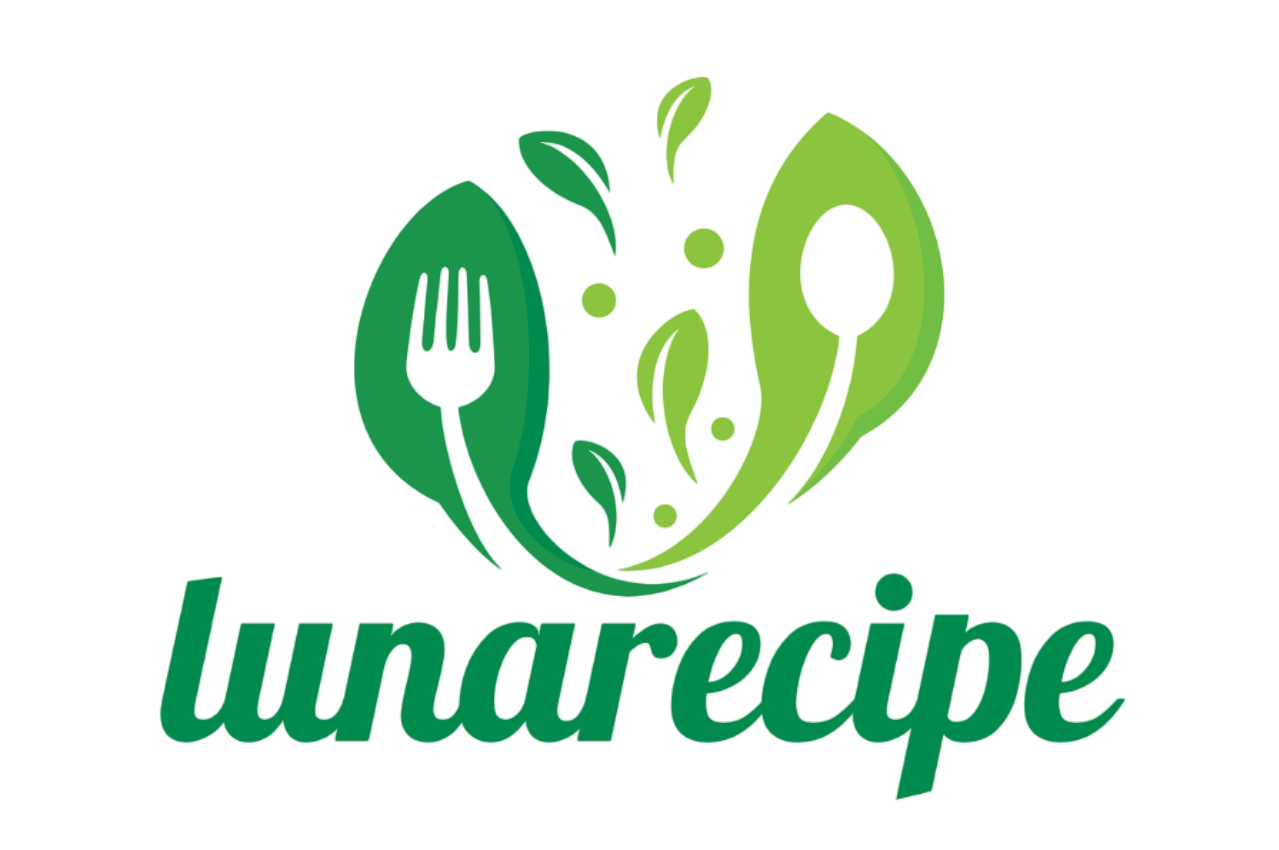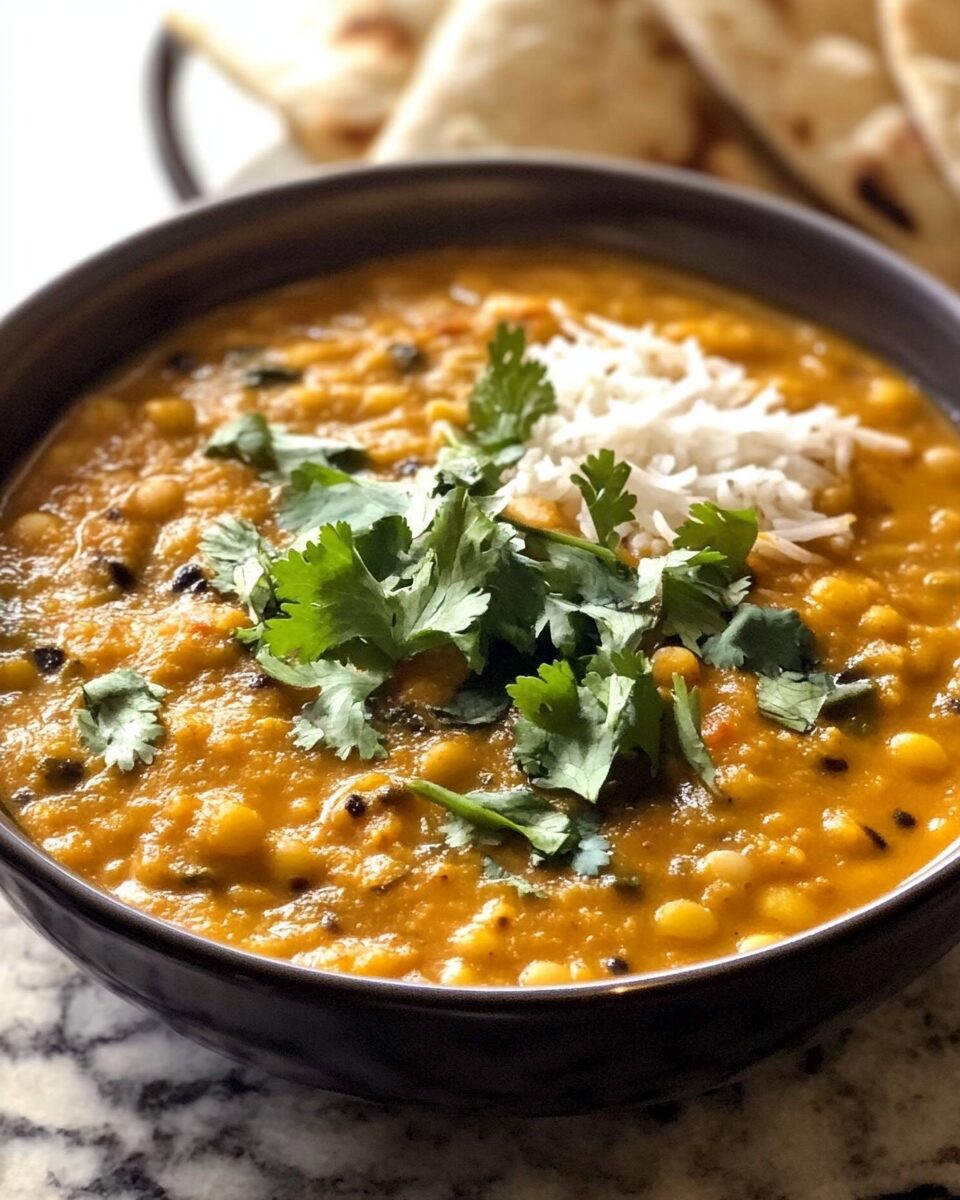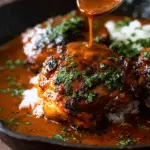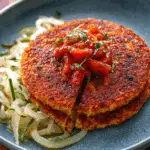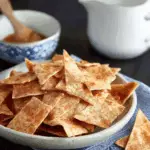The beauty of Indian Dal lies in its humble ingredients and transformative flavors. What begins as a simple pot of lentils evolves into a dish rich with aroma and warmth, thanks to the garlic, curry leaves, and a subtle touch of garam masala.
Whether served as a hearty main or a nourishing side, this creamy dal offers comfort in every bite. Add a sizzling tadka for a restaurant-style finish, and enjoy it with steamed rice or warm flatbread. It’s plant-based perfection that invites both tradition and simplicity to your plate.
Full Recipe:
For the Dal:
-
2 tbsp ghee (or 1 tbsp oil + 1 tbsp butter)
-
2 green cayenne chilies, deseeded and chopped (optional)
-
1 medium onion, finely chopped
-
6 garlic cloves, finely chopped
-
1 tbsp fresh ginger, finely chopped
-
8 fresh curry leaves (or 6 dried)
-
1 tomato, chopped
-
1/2 tsp ground cumin
-
1 cup dried chana dal (or yellow split peas)
-
4 cups water
-
1/2 tsp turmeric powder
-
1/8 tsp garam masala
-
3/4 tsp salt
Optional Tadka (Spiced Oil Garnish):
-
1.5 tbsp ghee (or 1/2 tbsp butter + 1 tbsp oil)
-
1 small eschalot or 1/4 small onion, thinly sliced
-
1 tsp cumin seeds
-
1/2 tsp black mustard seeds (optional)
-
3 dried red chilies, broken (optional)
To Serve:
-
Steamed basmati rice
-
Fresh cilantro (optional)
Directions:
-
Rinse the lentils and soak in water for 1 hour, then drain.
-
Heat ghee in a large saucepan over high heat. Add the green chilies and sauté for 1 minute.
-
Add onion and cook until softened.
-
Lower heat to medium, add garlic, ginger, and curry leaves. Cook for 1 minute.
-
Stir in chopped tomato and cumin, cooking until it becomes a thick paste, about 2 minutes.
-
Add soaked lentils, water, turmeric, and salt. Stir well.
-
Bring to a simmer, cover, and cook gently for 1 hour, stirring occasionally.
-
Uncover and simmer another 30 minutes until the texture is like porridge—thick and creamy.
-
Stir in garam masala at the end. Adjust salt to taste.
-
For the Tadka (optional): Heat ghee in a small pan, add cumin and mustard seeds. Once cumin is golden, add chilies and sliced eschalot. Sauté until lightly golden.
-
Immediately pour the sizzling Tadka over the cooked Dal and stir gently.
-
Serve hot over rice with fresh cilantro.
Prep Time: 15 minutes | Cooking Time: 90 minutes | Total Time: 1 hour 45 minutes
Kcal: 315 kcal per serving | Servings: 4 servings
What is Dal?
Dal, also spelled daal, dahl, or dhal, is one of the most iconic and widely consumed dishes across the Indian subcontinent. At its core, dal refers to lentils, both the raw ingredient and the cooked dish. The term encompasses a wide variety of preparations, depending on the region, local customs, and family traditions. From creamy yellow dals in the north to thin, spicy versions in the south, dal is more than just a dish—it’s comfort food, nutrition, and culture in a bowl.
Despite being a humble blend of lentils, water, spices, and aromatics, dal holds a special place in Indian homes. It’s served almost daily, either as a main or a side, paired with rice or flatbread. Dal transcends social strata—from simple village meals to elaborate restaurant platters, it appears in countless variations but always remains deeply nourishing and satisfying.
The Cultural Significance of Dal
Dal is more than just a recipe—it’s an essential component of Indian cuisine, woven into the fabric of daily life. It’s one of the first foods introduced to children, a staple in vegetarian diets, and even a part of religious and ceremonial offerings. In India, where vegetarianism is prevalent, dal serves as a primary source of protein. It is common to see households preparing different types of dal each day to ensure variety and balanced nutrition.
The simplicity and adaptability of dal make it a unifying dish across India’s diverse culinary landscape. Each region lends its own interpretation using locally available lentils, such as moong dal, toor dal, masoor dal, or chana dal. Spices, fats (like ghee or mustard oil), and cooking methods vary, yet the result is always a wholesome and hearty dish. This flexibility is what has allowed dal to travel across borders and become a beloved dish in homes around the world.
This Version: Dal Tadka
The version of dal featured in this recipe is called Dal Tadka, which hails from Northern India and is one of the most popular preparations served in restaurants. “Tadka” refers to the technique of tempering spices in hot oil or ghee and pouring it over the cooked lentils. This step elevates the flavor of the dal with a burst of aromatic richness, adding complexity and depth to an otherwise mellow dish.
Dal Tadka is known for its creamy consistency, golden-yellow hue, and subtle spicing. It strikes a beautiful balance: not too heavy or rich, but flavorful enough to stand on its own. The tempering process often includes cumin seeds, mustard seeds, garlic, dried chilies, and sometimes onions or curry leaves, all sizzled until fragrant and then poured over the cooked dal. This sizzling finish adds an incredible layer of texture, aroma, and visual appeal.
Why This Dal is Special
What sets this particular recipe apart is its accessibility without compromising authenticity. It uses pantry-friendly spices like cumin, turmeric, and garam masala, and swaps exotic or hard-to-find ingredients with more common alternatives when needed. For instance, if chana dal is unavailable, yellow split peas can be used instead—delivering a similar texture and flavor profile.
This dal is also versatile in heat. The base recipe is mild, making it family-friendly, but it can be easily adjusted for spice lovers by retaining chili seeds or adding a pinch of chili powder. The recipe also includes optional ingredients like curry leaves and mustard seeds that enhance the flavor without being mandatory.
Another highlight is the use of ghee, which lends a luxurious, nutty flavor. Ghee is widely used in Indian cooking for its depth of taste and high smoke point, making it ideal for the tadka. However, for a vegan version, the ghee can be replaced with oil, and butter can be omitted entirely.
Nutrition and Health Benefits
Dal is naturally rich in plant-based protein, making it a go-to source of nutrition for vegetarians and vegans. Lentils are also high in dietary fiber, which supports digestion, regulates blood sugar, and contributes to a feeling of fullness. They’re low in fat and contain essential nutrients such as iron, folate, potassium, and B vitamins.
Using turmeric and garlic in the dish adds anti-inflammatory and immune-boosting properties, while cumin supports digestion. The absence of cream or heavy fats makes this dish light, yet satisfying. With a controlled use of oil and ghee, it can easily fit into most dietary goals, including gluten-free, dairy-free (with simple swaps), and heart-healthy diets.
In addition, dal is budget-friendly and made with ingredients that are shelf-stable. This makes it perfect for meal planning and prepping, especially for households looking to eat well on a budget.
Serving Suggestions
Dal is typically served with a starch such as steamed basmati rice, jeera rice (cumin rice), or Indian flatbreads like roti, naan, or paratha. Adding a side of achar (Indian pickle), papadam, or a cooling raita can complete the meal and provide contrast in texture and flavor.
For a richer meal, serve dal alongside other Indian dishes like paneer butter masala, aloo gobi, or baingan bharta. In simpler settings, dal and rice alone make a comforting and nourishing one-bowl meal that feels like a warm hug.
Leftover dal also stores well in the refrigerator and can be frozen for up to a month. Upon reheating, you may need to add a bit of water to loosen the consistency. Its flavor often deepens the next day, making it even more delicious.
Tips for Perfect Dal
-
Soak the lentils: This step reduces cooking time and improves digestibility. A one-hour soak is sufficient, though it can be skipped in a pinch.
-
Don’t skip the aromatics: Garlic, ginger, and onions form the flavor base of this dal. Take your time sautéing them properly.
-
Be gentle with the simmer: A slow simmer helps break down the lentils naturally without turning them into complete mush. You want a porridge-like consistency with some texture.
-
Tadka is magic: Though optional, tadka takes dal from delicious to unforgettable. Be mindful not to burn the spices—once they turn aromatic and golden, pour them immediately.
-
Adjust consistency: Some prefer dal thin and soup-like; others prefer it thick. Adjust water towards the end of cooking to suit your texture preference.
Adapting the Recipe
One of the best things about dal is how easily it can be customized:
-
Make it vegan: Use vegetable oil instead of ghee and skip any dairy-based additions.
-
Boost the veggies: Add spinach, kale, or diced carrots for extra nutrients and color.
-
Add protein: Top with a dollop of Greek yogurt, or for non-vegetarians, add shredded chicken or boiled eggs.
-
Spice it up: Customize the heat level by adding red chili powder, green chilies, or crushed black pepper.
-
Switch the lentils: If you don’t have chana dal, use red lentils (masoor dal) for a quicker-cooking version or moong dal for a lighter feel.
Conclusion
Dal Tadka is the kind of recipe that combines comfort, health, affordability, and flavor in one humble bowl. Its roots are deeply Indian, yet its universal appeal has made it a global favorite. From its rich aroma to its silky texture, every spoonful tells a story of tradition, adaptability, and nourishment.
Whether you’re looking to expand your vegetarian repertoire, explore Indian flavors, or simply want a cozy meal that satisfies without being heavy, dal is an unbeatable choice. It’s proof that the simplest ingredients, when cooked with care, can become something extraordinary.
So the next time you’re wondering what to make for dinner, consider this dal—it’s warm, inviting, deeply nourishing, and incredibly delicious. A timeless classic, served with love.
